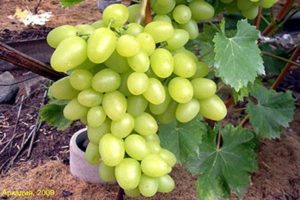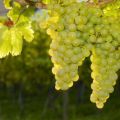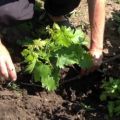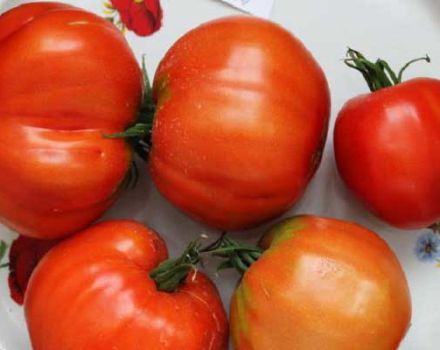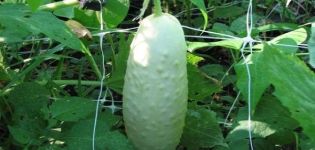Description and characteristics of the Cabernet Sauvignon grape variety, regions for cultivation and planting rules
Cabernet Sauvignon grapes are grown in most cases for winemaking. Gardeners note many positive aspects of all varieties of this variety. Dark blue berries are small, round in shape. To obtain a large and high-quality crop, it is necessary to pick up seedlings and plant them correctly. Care in each season has its own characteristics.
Breeding history
The variety first became known in France more than 300 years ago due to the combination of two varieties of grapes with fruits of different colors - white Sauvignon and red and black Cabernet Franc. The result is a Cabernet Sauvignon hybrid that has the best characteristics.
Description of the variety
The white and dark blue Cabernet Sauvignon ripens late in mid-October. If the berries are intended to make table wine, then 145 days are enough for ripening. For making dessert wine, the harvest is harvested later, after 165 days. The plant forms a highly spreading bush, which is most often formed with a strong main trunk and hanging shoots. After planting, fruiting begins after 4 years.
The description indicates that the leaves are round with reddish, coarsely carved edges. Long, conical bunches of berries up to 16 cm long form on the branches.
The berries are small, no more than 16 mm in diameter, weight 3 g. The color of the dense skin is dark-gray, the top of the berries is covered with a waxy layer. There are 2-3 bones inside. The berries taste juicy, tart-sweet.
What are the advantages
The main advantage of the variety, according to experienced gardeners, is minimal maintenance.
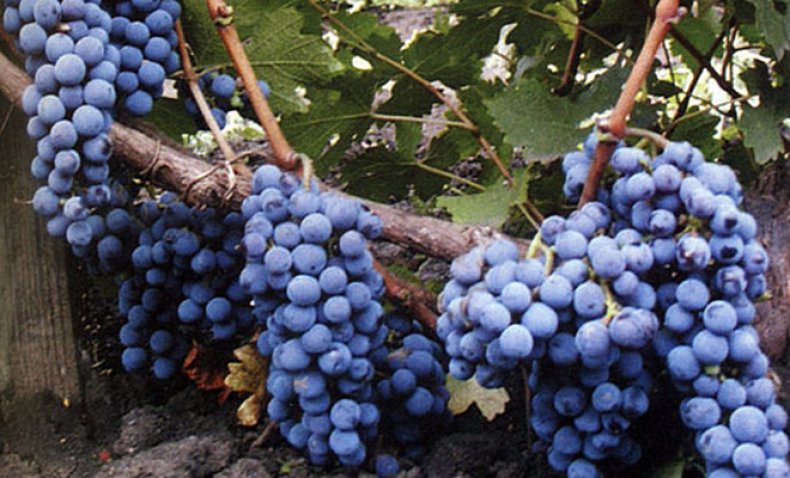
Other benefits of grapes include:
- the variety tolerates drought and low temperatures well;
- the plant is resistant to waterlogging of the soil;
- well resists infections and pests;
- forms a consistently high yield;
- juices and wines are made on the basis of sweet berries;
- berries do not crack, even if they are overripe;
- quickly adapts to changes from the external environment.
If the grapes are properly looked after, then there will be no flaws. The large number of berries in a bunch leads to the fact that some of them begin to crumble. To prevent this from happening, it is necessary to carry out timely pruning of shoots and leaves, as well as tie the vine to a support.
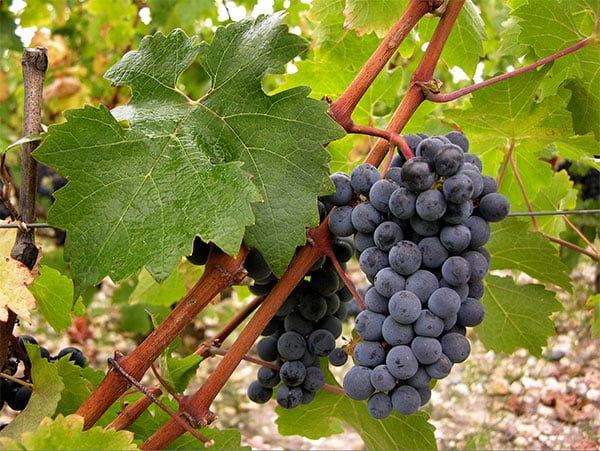
Variety of species
Cabernet grapes, in addition to the Sauvignon variety, include many other varieties:
- The black Fran grape is the progenitor of the Cabernet Sauvignon variety. Ripens early, average yield. The dense skin of dark blue berries is covered with a waxy layer.
- Northern Cabernet grapes begin to ripen in early autumn, forming compact clusters weighing up to 90 g. The bushes themselves are compact, low. The berries are small with a slight layer of bloom. The variety is distinguished by frost resistance (up to -28 degrees).
- Cortis is obtained in Germany by combining Cabernet Sauvignon and Merzling. Distinctive features are considered to be early ripening numbers, the formation of a high yield annually and resistance to diseases. The gray berries are covered with a waxy layer.
- The Jura variety was bred in Switzerland, has medium early ripening boundaries, good immunity. The berries are dark blue with a purple bloom.
- Variety Cabernet Carbon is characterized by medium-late ripening of berries, the bunch is small, weighs 95 g. Small berries have a rounded shape.
- Cabernet Michurinsky grapes begin to ripen early, small clusters. It is characterized by the formation of a large yield, frost resistance and good disease resistance. Withstands frosts down to -29 degrees.
- Dorsa grapes begin to ripen in September, the yield is average, the bunches are formed every year.
- The Karol variety is distinguished by medium ripening limits of sweet berries and high yield. Flowering begins much later than other Cabernet varieties, so the flowers are not caught by spring frosts.

Before making a choice in favor of this or that variety, you need to get acquainted with the characteristics. It is important to take into account the climatic features of the region in which it is supposed to grow grapes.
Distinctive characteristics
The characteristic of the variety will allow you to determine the distinctive features:
- Saplings are fast growing.
- The leaves have a red border.
- The berries can be recognized by their round shape and dark blue color.
- A bunch of grapes weighs approximately 75 g.
- Ripe berries smell like currants.
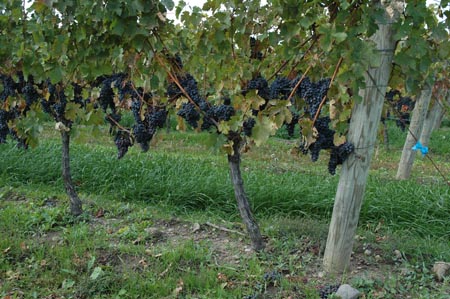
These features will help you recognize the Cabernet Sauvignon grape variety.
Tips for choosing seedlings
You should buy seedlings from trusted sellers. When choosing, it is important to consider several features:
- If the roots of a seedling are too dry, then they will not take root well in a new place.
- It is better to buy seedlings immediately before planting in the ground, since they are poorly stored.
- A seedling purchased in the fall should have a minimum number of leaves. If there are a lot of them, then there is a high probability that the seedling has lost a lot of moisture.
The following signs indicate a healthy and high-quality seedling:
- root branches have a light and moist appearance;
- when trying to bend the vine, cracks and traces of brittleness should not appear;
- the buds are strong, fit tightly to the branches and do not crumble at the slightest touch;
- the vaccination site is clearly visible.
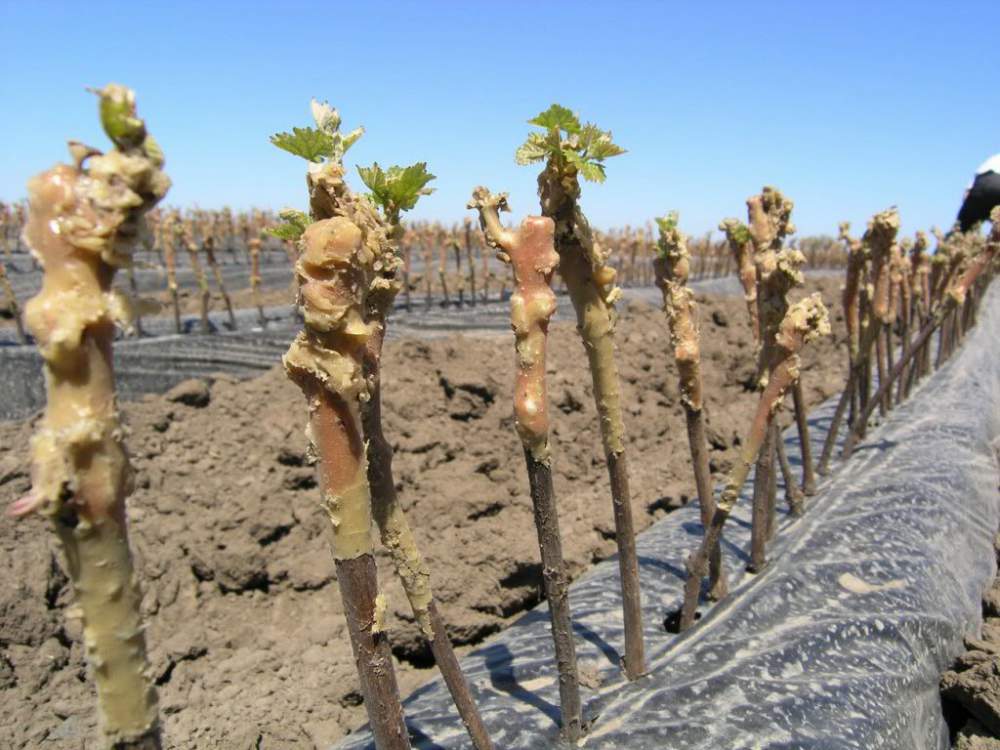
For reliability, the seller is asked to cut off a small part of the bark. If juice appears, and green insides appear, then the plant is healthy and fresh. If the seller does not agree to conduct such testing, you can doubt the quality of the purchased product.
Planting recommendations
Saplings are planted either in autumn or spring. Each season is characterized by positive aspects and disadvantages. If you plant grapes in spring, you can be sure that frost will not interfere with the development of the seedling. But it is difficult to keep the plant all winter long. Therefore, gardeners prefer to plant fruit shrubs in the fall.
In the autumn, they begin planting work long before the expected winter frost, so that the roots can adapt and gain strength. It is better to plant grapes in rows, every 3 meters. There must be a sufficient amount of nutrients in the soil.
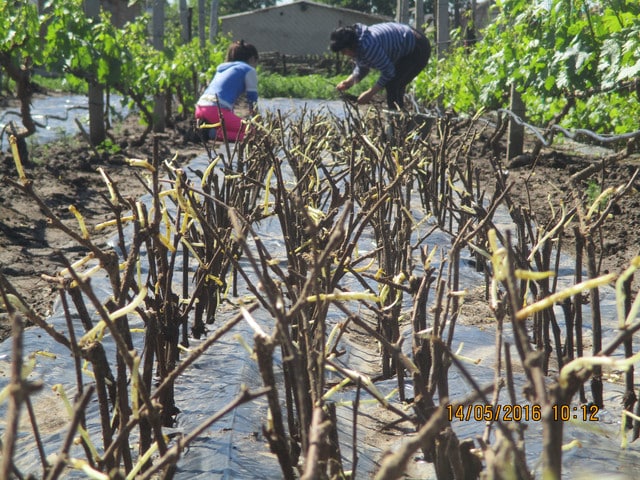
The landing site should be well lit and ventilated. It is better to plant on the south side of the buildings that are on the site. This will help protect the plant from cold northerly winds.
Cabernet Sauvignon grape care
Caring for Cabernet Sauvignon is easy. It is unpretentious and rarely exposed to pests or infections. Standard care includes the following points.
Watering
Young grape seedlings at the beginning of the growing season in spring require frequent and abundant watering. The soil should not be dry or too moist. For irrigation, use warm, settled water. The next watering is carried out before flowering. Then watered immediately after the end of the flowering period. Moisturize for the last time before winter. Adult shrubs are watered even less frequently.
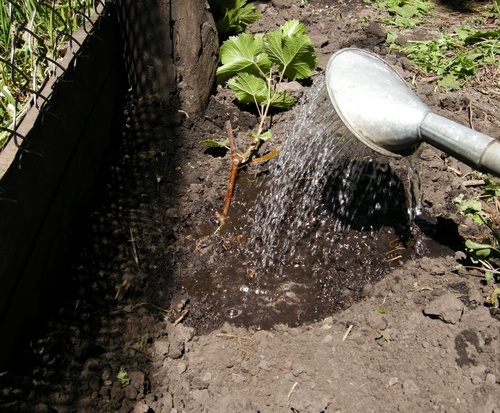
Top dressing
Fertilization is carried out correctly, observing the recommended dosages. An excess, as well as a lack of nutrients, leads to a slowdown in development and a decrease in yield.
Even before planting, it is recommended to introduce organic or mineral fertilizers into the soil (chicken manure, manure, peat, ammonium nitrate, wood ash are introduced). The stock of these components will be sufficient for the next few years. In the middle of spring, it is necessary to enrich the soil with potash, nitrogen and phosphorus components along with watering. Fertilizer is introduced into a special groove that is dug around the trunk.
Formation
The Cabernet Sauvignon grape variety needs pruning, which will relieve the vine and increase the number of crops. It is best to prune branches in the fall, when sap flow stops. In this case, the cut site is tightened faster, and the risk of infection is reduced. If spring pruning is done incorrectly, then a tear appears at the cut site, which flows down to the buds. As a result, kidney development stops.
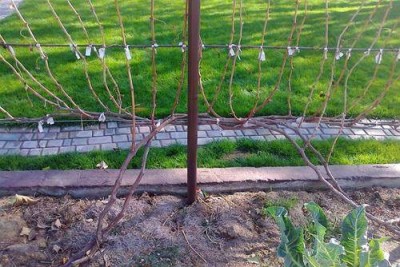
In the case when it was not possible to carry out the autumn pruning, it is better to postpone the procedure to early spring, when the snow is just beginning to melt. At the same time, dry and damaged branches must be removed. In the summer months, pinching is carried out to remove damaged or excess branches and leaves. This will allow warmth and sunlight to penetrate all parts of the plant.
Breeding methods of the variety
The Cabernet Sauvignon grape variety is propagated by cuttings. Rules to be followed:
- the processes are cut with a length of 48 cm;
- at least four developed buds should remain on each cutting;
- each shoot is cleaned of leaves;
- placed in a bucket of water for 20 hours;
- then treated with disinfecting solutions (suitable, for example, copper sulfate).
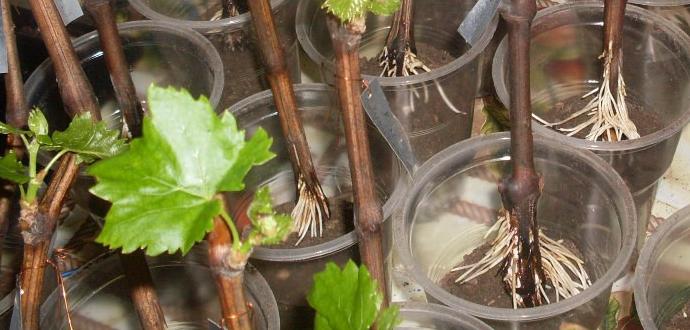
Cut cuttings intended for planting should be stored in a dark place, it is allowed to drop them into the ground.
Diseases and pests
Cabernet Sauvignon grapes rarely get sick and are attacked by insect pests. But it will not hurt to carry out preventive measures:
- Among the frequent grape pests spider mites, grape mites, and bunches are found.
- Of the diseases, grapes are most often affected by rot, anthracnose, mildew, bacteriosis, chlorosis.
The treatment procedure is recommended to be carried out immediately after the end of winter, giving preference to formulations on a natural basis.
Growing regions
The Cabernet Sauvignon grape variety loves warmth, so they are cultivated in Australia, Argentina, Italy, Kazakhstan, Romania, Ukraine, and France. Since the berries begin to sing late (after 155 days), this variety is not suitable for growing in any regions of Russia.
